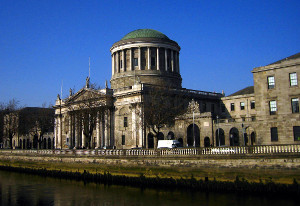Supreme Court: Minister’s decision to exclude home-schooled students from calculated grades scheme declared invalid

The Supreme Court has held that the decision of the Minister for Education to exclude certain home-schooled students from the calculated grades scheme in the 2020 Leaving Certificate was invalid. It was held that the Minister’s decision was an unlawful interference with the constitutional rights of the students and their parents.

About this case:
- Citation:[2022] IESC 1
- Judgment:
- Court:Supreme Court
- Judge:Mr Justice Donal O'Donnell
In reach the decision, the Supreme Court appeared to overturn the principle in Irish law that the courts were required to show deference when the executive power of the State was exercised by a Minister. It was held that the “clear disregard” test was not appropriate where it was alleged that constitutional rights were interfered with by the State.
Background
A full background to the Supreme Court decision can be found in the Irish Legal News case report on the Court of Appeal’s decision.
Essentially, the appeal related to two students who had been home-schooled prior to the 2020 Leaving Certificate. The students sought to avail of the calculated grade scheme implemented by the Minister for the 2020 examinations, but both were refused a calculated grade.
The first student was refused a calculated grade because he was taught by his mother. The Minister determined that the mother could not provide an independent assessment of her son’s grades despite being a registered teacher. The second student was taught by her mother and two tutors, none of whom were registered teachers. The Minister refused to consider the student for a calculated grade on the basis that there was no reliable evidence from a registered teacher to estimate the grades.
The students were successful in challenging the Minister’s decision in both the High Court and the Court of Appeal. In particular, the Court of Appeal held that the Minister had acted in breach of the students’ constitutional rights and that the decision was disproportionate to achieving fairness in the 2020 results. Critically, it was held that, in these cases, the proper test was not to ask whether the Minister had acted in “clear disregard” of the students’ rights. Instead, it was said that “judicial deference should be adhered to as far as is consistent with the protection of individual constitutional rights”.
The decision was appealed to the Supreme Court on several grounds. The main issue in the appeal was whether, in considering these students’ challenge to the scheme and the Minister’s decision, a court could only determine that the scheme was flawed if it amounted to a clear disregard of the Constitution. The court also considered whether the constitutional rights of the students were interfered with by the calculated grades scheme.
Supreme Court
Delivering judgment in the case, Chief Justice Donal O’Donnell began by stating that the calculated grade scheme was clearly the exercise of executive power pursuant to Article 28.2 of the constitution. As such, the court moved to consider whether the “clear disregard” test applied to the scheme.
It was noted that the application of the “clear disregard” standard to executive action was applied in a wide variety of cases, including foreign relations, government expenditure, the provision of support services for children and the Special Criminal Court (Boland v. An Taoiseach [1974] I.R. 338; Crotty v. An Taoiseach [1987] I.R. 713; McKenna v. An Taoiseach (No 2) [1995] 2 I.R. 10; Kavanagh v. Government of Ireland [1996] 1 I.R. 321; T.D. v. Minister for Education [2001] IESC 10). Arising from these cases, the state argued that “deference arises because of who the government is, not necessarily what it does”.
The court noted the position of the Court of Appeal, which held that courts were obliged on a case-by-case basis to give appropriate weight to the vindication of constitutional rights and deference to executive power as far as possible. However, Mr Justice O’Donnell stated that it was difficult to understand why a more rigorous standard of judicial oversight applied to legislative action infringing constitutional rights compared to executive action which had the same effect.
The court also referred to the law of judicial review of administrative action which “subjects decisions made pursuant to the executive power to the same rigorous scrutiny that is applied to any exercise of public law power”. In this context, it was also difficult to understand why a different standard applied in cases affecting constitutional rights.
It was held that the proper characterisation of judicial deference was not a matter of choice on the part of a court, but rather was deduced from and mandated by the Constitution. The courts were required to give effect to the express provisions of the Constitution, the court said.
The court noted that there were no provisions in the Constitution dealing with executive power, with no power of review conferred upon the Judiciary. However, executive power was expressly curtailed in certain provisions of the Constitution, and therefore the executive could be restrained by the courts if it acted contrary to those provisions, the court held.
It was stated that the executive under the Irish Constitution was not generally empowered to directly affect the rights of citizens. For example, the executive could not arrest or detain any individual “no matter how carefully constructed the rules were, what safeguards were established and how proportionate if was to a legitimate state interest”. The executive could only operate in accordance with acts of the legislature.
It was stated that the courts were obliged to defend and vindicate the rights of the citizen and that there was no reason to extend deference to decisions of the executive “over and above the presumption of constitutionality”. If it was established that the government breached the rights of the citizen, then the courts must defend the rights of that citizen “in the same way and applying the same standards, as if those rights had been infringed by the actions of the legislative branch of government”.
Infringement of the students’ rights
The court then turned to consider whether the constitutional rights of the students were infringed by the Minister. It was held that there was no constitutional right for the students to have reasonable account taken of their situation when education policies were being implemented by the State. Instead, having regard to Article 42, the court considered the right of parents to provide education in the home and the derived right of children to receive it.
It was noted that the calculated grades scheme did not technically prevent these students from obtaining a Leaving Certificate and that the main complaint was that the scheme operated to deprive them of a Leaving Certificate at the same time as other candidates. The court held that the freedom to provide education at home did not involve any right to demand that the State provide an examination system to measure a child’s knowledge and skill.
It was held that the test of proportionality provided a “useful frame of analysis” to consider whether a constitutionally-protected right was impermissibly interfered with. It was held that the students’ ineligibility for the scheme imposed a burden upon them which occurred because they had chosen to exercise a guaranteed constitutional freedom. On the individual facts of the case, their exclusion from the scheme was a “significant and substantial interference” with their rights.
The court rejected the State’s submission that an individualised assessment of the students would be unfair to the rest of the student body, stating that there was no evidence of this concern. Further, any impact on the general student body would be of a much lesser order than the impact on the home-schooled students.
Conclusion
The court upheld the decision of the High Court and the Court of Appeal, although stated that it was on different and narrower grounds. Accordingly, the Minister’s appeal was dismissed.









